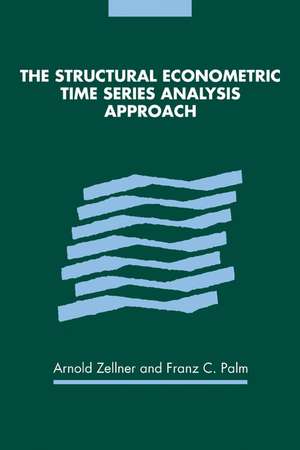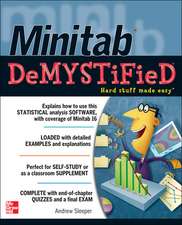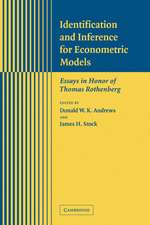The Structural Econometric Time Series Analysis Approach
Editat de Arnold Zellner, Franz C. Palmen Limba Engleză Paperback – 16 feb 2011
| Toate formatele și edițiile | Preț | Express |
|---|---|---|
| Paperback (1) | 441.30 lei 6-8 săpt. | |
| Cambridge University Press – 16 feb 2011 | 441.30 lei 6-8 săpt. | |
| Hardback (1) | 741.94 lei 6-8 săpt. | |
| Cambridge University Press – 20 oct 2004 | 741.94 lei 6-8 săpt. |
Preț: 441.30 lei
Nou
Puncte Express: 662
Preț estimativ în valută:
84.45€ • 91.70$ • 70.94£
84.45€ • 91.70$ • 70.94£
Carte tipărită la comandă
Livrare economică 22 aprilie-06 mai
Preluare comenzi: 021 569.72.76
Specificații
ISBN-13: 9780521187435
ISBN-10: 0521187435
Pagini: 736
Dimensiuni: 152 x 229 x 37 mm
Greutate: 0.97 kg
Editura: Cambridge University Press
Colecția Cambridge University Press
Locul publicării:Cambridge, United Kingdom
ISBN-10: 0521187435
Pagini: 736
Dimensiuni: 152 x 229 x 37 mm
Greutate: 0.97 kg
Editura: Cambridge University Press
Colecția Cambridge University Press
Locul publicării:Cambridge, United Kingdom
Cuprins
Introduction; Part I. The SEMTSA Approach: 1. Time series analysis and simultaneous equation econometric models A. Zellner and F. C. Palm; 2. Statistical analysis of econometric models A. Zellner; 3. Structural econometric modeling and time series analysis: an integrated approach F. C. Palm; 4. Time series analysis, forecasting and econometric modeling: the structural econometric modeling, times series analysis (SEMTSA) approach A. Zellner; 5. Large sample estimation and testing procedures for dynamic equation systems F. Palm and A. Zellner; Part II. Selected Applications: 6. Time series and structural analysis of monetary models of the US economy A. Zellner and F. Palm; 7. Time series versus structural models: a case study of Canadian manufacturing inventory behavior P. K. Trivedi; 8. Time series analysis of the German hyperinflation P. Evans; 9. A time series analysis of seasonality in econometric models C. I. Plosser; 10. The behavior of speculative prices and the consistency of economic models R. I. Webb; 11. A comparison of the stochastic processes of structural and time series exchange rate models F. W. Ahking and S. M. Miller; 12. Encompassing univariate models in multivariate times series: a case study A. Maravall and A. Mathis; Part III. Macroeconomic Forecasting and Modeling: 13. Macroeconomic forecasting using pooled international data A. Garcia-Ferrer, R. A. Highfield, F. Palm and A. Zellner; 14. Forecasting international growth rates using Bayesian shrinkage and other procedures A. Zellner and C. Hong; 15. Turning points in economic time series, loss structures and Bayesian forecasting A. Zellner, C. Hong and G. M. Gulati; 16. Forecasting turning points in international output growth rates using Bayesian exponentially weighted autoregression, time-varying parameter and pooling techniques A. Zellner, C. Hong and C. Min; 17. Bayesian and non-Bayesian methods for combining models and forecasts with applications to forecasting international growth rates C. Min and A. Zellner; 18. Pooling in dynamic panel data models: an application to forecasting GDP growth rates A. J. Hoogstrate, F. C. Palm and G. A. Pfann; 19. Forecasting turning points in countries' output growth rates: a response to Milton Friedman A. Zellner and C. Min; 20. Using Bayesian techniques for data pooling in regional payroll forecasting J. P. LeSage and M. Magura; 21. Forecasting turning points in metropolitan employment growth rates using Bayesian techniques J. P. LeSage; 22. A note on aggregation, disaggregation and forecasting performance A. Zellner and J. Tobias; 23. The Marshallian macroeconomic model A. Zellner; 24. Bayesian modeling of economies and data requirements A. Zellner and B. Chen.
Descriere
This text offers key texts in the theory and application of the Structural Econometric Time Series Analysis (SEMTSA) approach.









